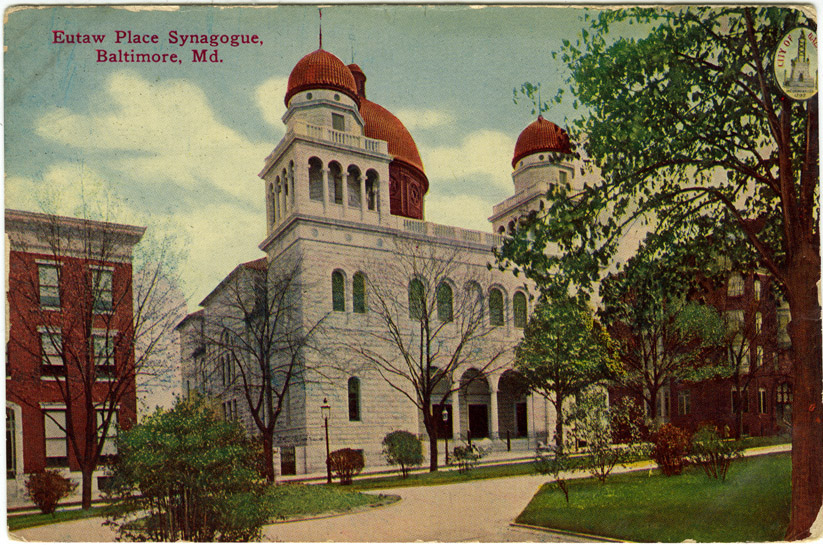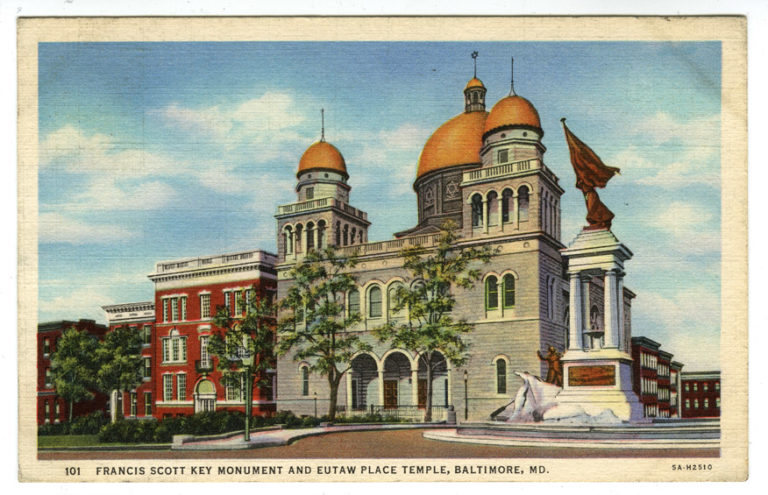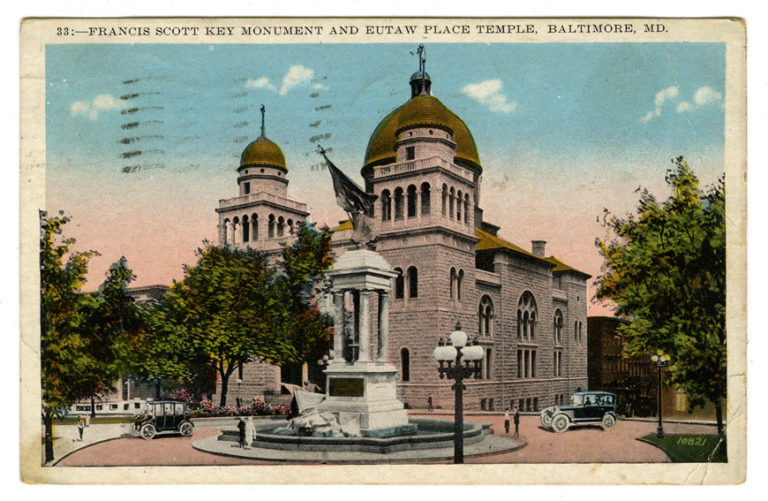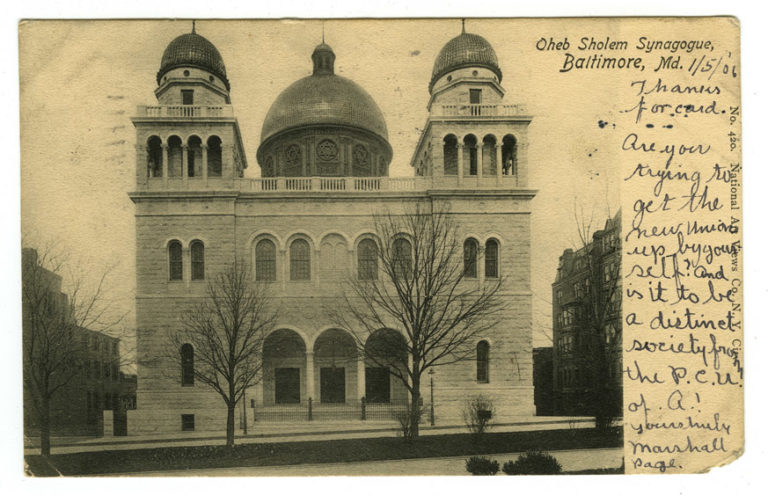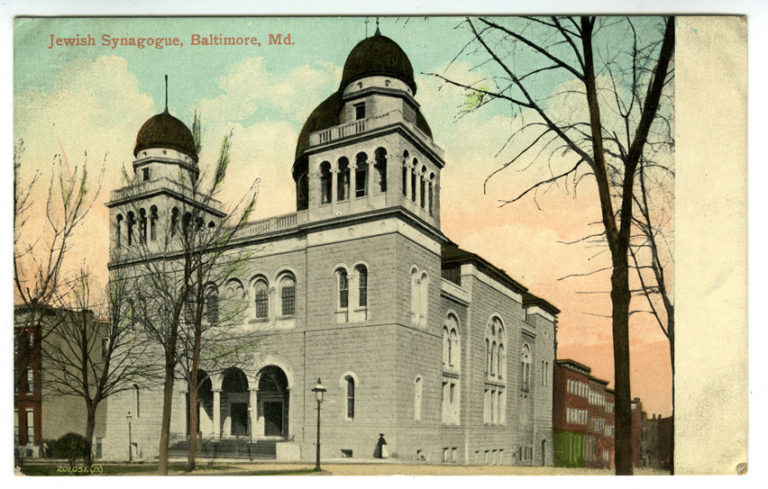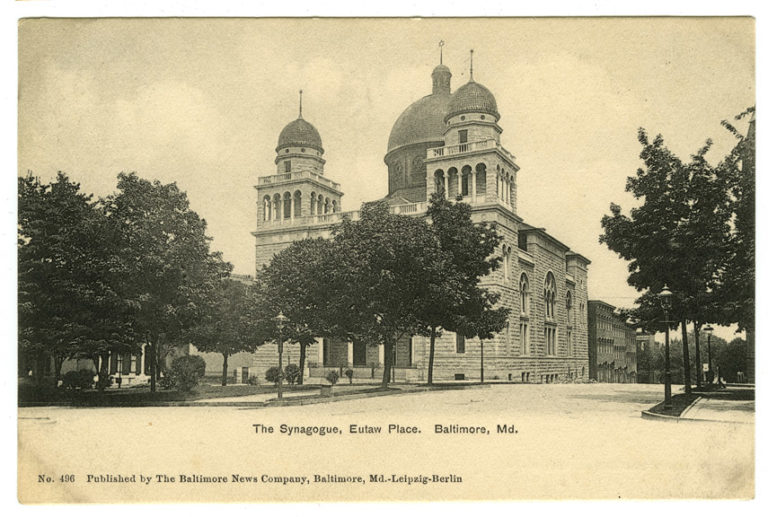5.2 Baltimore, Maryland
Congregation Oheb Shalom/Eutaw Place Temple, 1307 Eutaw Place, corner of Lanvale Street
Joseph Evans Sperry, architect, 1892
F. M. Kirby and Co., publisher; no publication date, but June 26, 1910, is written on the back
Set in the Bolton Hill neighborhood of Baltimore, Eutaw Place Temple is the second home of the mostly German Jewish Oheb Shalom (Lovers of Peace) congregation. The temple was erected in competition with the recently built Baltimore Hebrew Congregation. Everything at Oheb Shalom was just a little bigger and grander, and the style was more classical than medieval.
Oheb Shalom even hired the same architect as its rival, but he died soon after, and Joseph Sperry was engaged. At the cornerstone-laying on June 29, 1892, the congregation’s president, Isaac Strouse, remarked optimistically that “our new temple will fairly rival the temple of our forefathers when Solomon was mighty in Jerusalem.”1
Facing growing antisemitism in the late 19th century, the Jewish population found something to be proud of in their new grand temples; membership soared for each congregation when the new temples opened. According to Saul Zalesh, historian of Baltimore’s German Jewish community and their synagogues, the Strouse Brothers were owners of one of the largest clothing businesses in America, but local businessmen held their industry “in contempt because most clothing manufacturers were Jewish.”2
Like its predecessor, Eutaw Place Temple was composed of twin towers and a central dome, an arched entrance and side bays, reflecting the arrangement of space within. Yet the overall impression of the new Oheb Shalom was quite different from that of Baltimore Hebrew congregation. Oheb Shalom was built of gleaming white marble rather than the darker granite of Baltimore Hebrew. More classical in style than its “Byzantine” neighbor, the new Oheb Shalom Temple made liberal use of the Renaissance motif of arcaded doors and windows, inspired by the 1890s trend toward Beaux Arts neo-classism.
The exterior is white Beaver Dam marble. The main space is roughly 82 feet (25m) square, capped by a series of vaults and the dome and surrounded by galleries, seating about 2,200. The temple originally cost $225,000 to build.
Sold to the Prince Hall Masons in 1960, Eutaw Place Temple today is a major contributing structure in the Bolton Hill Historic District.
Joseph Sperry went on to design three more synagogues in Baltimore: Har Zion Temple on Bolton Street (1894), Chizuk Amuno on McCullough Street (1895), and Chizuk Amuno on Eutaw Place, now Congregation Beth Am (1922), none of which is known to have been represented in postcard views.
1 Baltimore American, June 30, 1892.
2 Saul E. Zalesch, “Synagogue Building in Baltimore During the Nineteenth Century,” (MA thesis, Department of Art History, University of Delaware, 1984), 110–111
